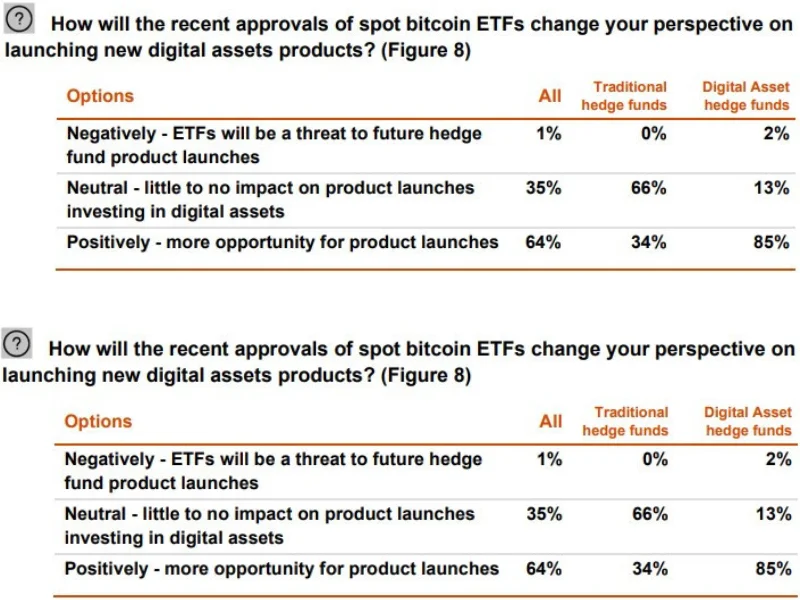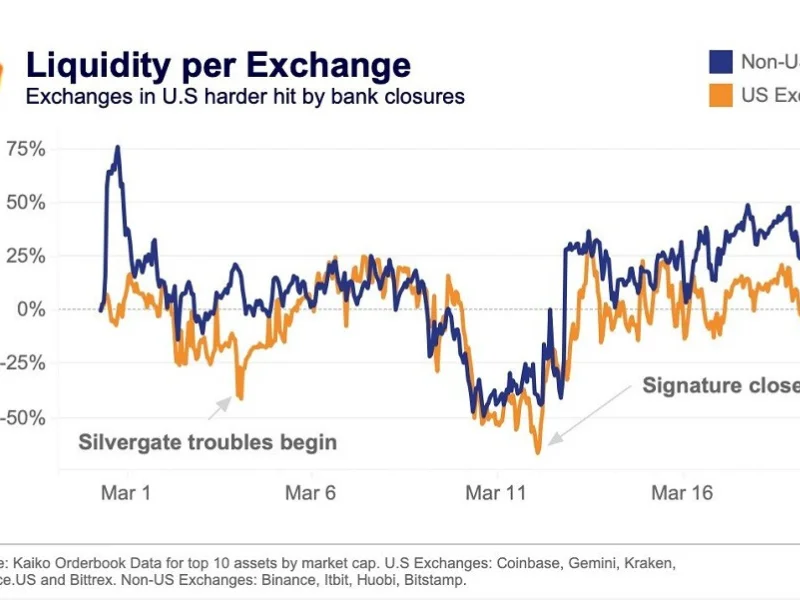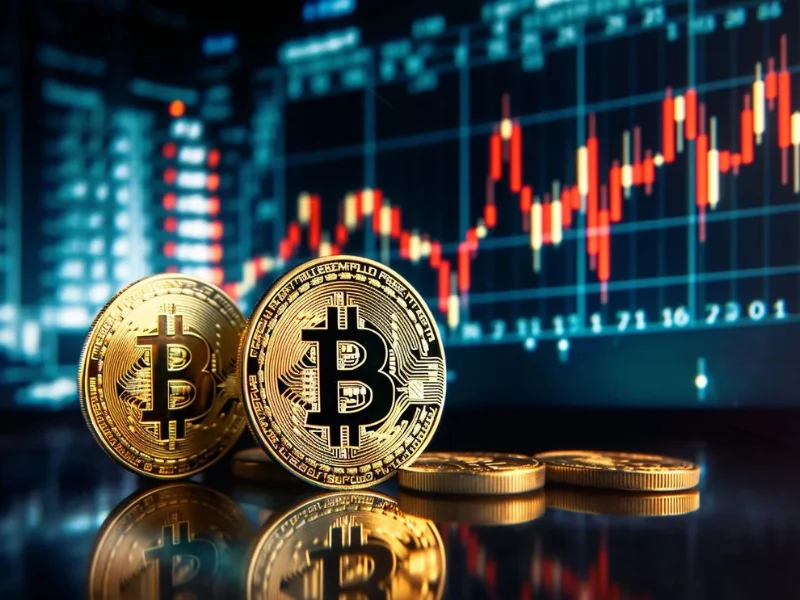1) Introduction
Purpose of the article
This piece gives you an up-to-the-minute, data-driven view of crypto—what’s moving prices, where institutional capital is flowing, which technologies matter, how regulation is evolving, and what adoption looks like on-chain and in the real world. We pull from primary, trusted sources throughout (CoinDesk, CoinShares, Glassnode, DeFiLlama, CoinMarketCap/CoinGecko, Bloomberg/Reuters/FT, BIS/IMF, Kaiko, Messari, Dune, CryptoQuant, etc.) and synthesize the signal for all audiences—crypto beginners, retail investors, and institutions.
Why staying updated matters
Crypto cycles turn on Bitcoin Liquidity Crunch and policy. Prices can reprice in days, but the drivers—monetary conditions, ETF flows, on-chain usage, and regulatory decisions—leave fingerprints in data. Staying current improves risk management, execution quality, and strategic timing (from DCA and yield tactics for retail to execution algorithms, PM risk limits, and board reporting for institutions).
Our primary sources
For market-wide metrics and flows we reference CoinMarketCap/CoinGecko and CoinShares; for on-chain structure and investor behavior we use Glassnode and CryptoQuant; for liquidity/microstructure we use Kaiko; for DeFi and exploits we use DeFiLlama; for dApp/L2 adoption we use Messari and Dune; for regulation and legal we cite CoinDesk, DL News, Reuters, FT, ESMA/FCA/SEC; for CBDCs we cite BIS/IMF. Examples are cited inline.
Key insights covered
- Global market pulse: market cap, BTC/ETH leadership, and turnover patterns.
- Institutional demand: ETFs/ETPs, MicroStrategy/“Strategy,” and fund-flow momentum.
- Tech stack shifts: Ethereum’s Dencun/L2s, Solana performance, and ZK/security.
- Regulatory regime-shift: MiCA live in the EU, UK stablecoin rules advancing, U.S. enforcement pivot and headline cases.
- Adoption & sentiment: retail vs institutional behavior, social/ETF/derivatives overlays.
- On-chain internals: activity, exchange reserves, liquidity, and market depth.
- Forward look: NFTs beyond speculation, DeFi rails, stablecoins/CBDCs, and what a true institutional surge does to liquidity.


2) Global Market Trends
Current market performance & capitalization
- As of Aug 26, 2025, the total crypto market cap sits around $3.7–$3.8T. CoinMarketCap’s dashboard shows ~$3.78T with BTC dominance still high. CoinMarketCap
- Bitcoin Liquidity Crunch trades near $110k–$113k today; ETH has recently challenged cycle highs (with Kaiko noting fresh records near ~$5k on some venues). Kaiko Research
24h/7d pulse & notable drivers: Prices have been choppy as macro expectations oscillate, with Kaiko and Glassnode both flagging periods of tight liquidity punctuated by ETF-led flows and bursts of spot demand (ETH’s breakout and BTC’s pushes back toward ATHs). Kaiko Research+1
Source of record spot data: BTC/ETH live pages and global cap from CoinMarketCap remain the market reference for intraday snapshots. FastBullCoinMarketCap
Institutional involvement & macro influence
- Digital-asset ETP flows: CoinShares’ weekly reports show large swings. Two August prints frame the context: Aug 18 saw $3.75B inflows (ETH led with $2.87B), while Aug 25 recorded $1.43B outflows amid Fed-policy jitters and profit-taking. These flows increasingly set the tone for market direction.
- MicroStrategy → “Strategy”: The company’s August SEC filing shows 628,791 BTC acquired for $46.08B (avg cost ~$73,214), underscoring corporate treasury demand as a structural bid. SEC
- Sentiment vs macro: Kaiko links BTC/ETH advances with a softer USD and risk-on episodes; ETF and policy headlines amplify flows. Kaiko Research+1
3) Technological Developments & Innovations
Blockchain advancements (throughput & scalability)
- Ethereum Dencun (EIP-4844): March 2024’s data-blobs cut rollup costs, catalyzing L2 usage into 2025. Messari and Dune show L2s (notably Base) concentrating activity and fees; Base alone now accounts for ~80% of L2 fee revenue, signaling app-market fit and economic gravity on L2.
- Solana performance: Messari’s Q2’25 report highlights improving app revenue capture ratios and robust activity, reflecting ongoing throughput/performance work (e.g., client diversity efforts like Firedancer).
On-chain corroboration: Glassnode observes regime phases where spot volumes cool while open interest rises, and episodes where large OTC distributions stress liquidity yet are absorbed—evidence of deeper market plumbing than in past cycles.
Security enhancements in crypto
- ZKPs and rollups are now mainstream components of Ethereum scaling, enabling cheaper privacy-preserving proofs and improving settlement assurances. Post-Dencun, blob fees and rollup economics have materially changed fee structures. (See Dune/Messari/The Defiant analytics on L2 fees and blob revenue dynamics.)
- Protocol risk & exploits: DeFiLlama’s Exploits dashboard plus aggregate TVL help map protocol risk versus capital at stake; exploit intensity and sizes remain key inputs to risk budgeting and insurance. (See DeFiLlama for live exploit registry & TVL context.) CryptoquantDeFi Llama
Impact of smart contracts & dApps
- DeFi continues as crypto’s primary product-market fit. Ethereum share of TVL remains the anchor (DeFiLlama), while Messari sector reports show dApp growth on L1s and L2s, DEX aggregator competition, and expanding RWA/AI verticals. FXStreet
- Data-driven adoption: Dune dashboards illustrate daily active addresses, fee markets, and L2 activity shifting; this is where developer/PM teams confirm or falsify narratives with actual usage.
4) Regulatory & Legal Landscape
Current regulatory updates
- EU (MiCA): Stablecoin rules took effect in mid-2024, with broader CASP licensing fully applicable from Dec 30, 2024; implementation guidance and Level-2/3 measures continued through 2025.
- UK (FCA): The FCA’s May 28, 2025 consultation proposes rules for stablecoin issuance and crypto custody, moving the UK toward a comprehensive regime; more consultations run into 2026.
- U.S. enforcement pivot: Major cases brought in 2023–24 shifted in 2025. Reuters reports the SEC ended its case against Ripple with a penalty; separate reporting indicates the SEC moved to dismiss the Coinbase case as policy pivots take shape. (Always verify U.S. details as they are fluid.)
Legal cases & precedents
- Binance/CZ: DOJ’s 2023 plea and the $4.3B resolution, plus CZ’s four-month sentence in 2024, remain watershed compliance moments that inform current exchange risk policies.
Why it matters: Regulatory certainty determines who can buy (e.g., pensions/401(k)s), how they can buy (ETFs/qualified custodians), and where liquidity sits (regulated venues vs offshore). That, in turn, shapes depth, spreads, and slippage during surges.
5) Adoption & Market Sentiment
Retail and institutional adoption
- ETF flows = mainstream rails. CoinShares shows multi-billion-dollar weekly swings concentrated in BTC/ETH ETPs—an institutional conveyor belt into (or out of) crypto beta.
- Wallets, DeFi, NFTs: CoinGecko’s market dashboards and Messari sector reports point to continued growth in DeFi usage (DEX volume, lending/borrowing) and a more utilitarian NFT wave (brand membership, ticketing, gaming) rather than pure speculation.
- Education & behavior: CoinBureau’s adoption coverage remains useful for retail onboarding and narratives, though investors should pair it with the primary data above.
Social media & influencers
Sentiment on X/Reddit still amplifies flows, but the bigger marginal driver in 2025 has been ETF/ETP and macro policy. We triangulate social spikes with CoinShares flows and Kaiko liquidity metrics to avoid narrative traps. Kaiko Research
6) On-Chain & Blockchain Activity
Why on-chain metrics matter
- Activity & profitability: Glassnode reports alternating phases—new ATHs, profit-taking by long-term holders, then consolidation with risk shifting to derivatives. These cycles define where support truly sits and whether rallies have fuel.
- Liquidity stress tests: Events like an 80k BTC OTC distribution (late July) tested market depth; the market absorbed it—downside stabilized quickly—a contrast with 2022 conditions.
Liquidity & market microstructure
- Kaiko tracks market depth, spreads, and the relationship with USD liquidity and macro. It recently highlighted ETH’s breakouts on strong spot demand and BTC’s sensitivity to dollar moves—context for any execution plan during surges. Kaiko Research+1
- DeFi liquidity: DeFiLlama shows aggregate TVL and chain-level shifts—useful when mapping routing and slippage across DEXs and bridges (and when benchmarking protocol risk vs capital allocated). DeFi Llama
7) Emerging Trends & Future Outlook
NFT growth & impact
NFTs have matured from PFPs to utility primitives for loyalty, access, and gaming. Policy work from Coin Center emphasizes developer/user rights across self-custody and innovation, relevant as brands expand token-gated experiences.
DeFi’s continued evolution
Aave/Uniswap and newer perps/credit markets keep building; TVL and volume heatmaps indicate rotations across chains and L2s. Expect more RWA collateral, intent-based execution, and MEV mitigation shaping user experience. (Track via DeFiLlama + Messari sector notes.) DeFi Llama
Stablecoins & CBDCs
- Stablecoins: Active rule-making globally (EU MiCA, UK FCA consultations; the U.S. considering/passing stablecoin frameworks) is bringing reserve transparency and issuer licensing—a tailwind for institutional use.
- CBDCs: BIS surveys show most central banks exploring pilots or proofs-of-concept; IMF primers frame macro/FX implications. Expect more wholesale CBDC and mBridge-style cross-border experiments that interoperate with tokenized bank money. The Economic TimesYouTube
8) Investor Insights & Sentiment Analysis
Behavior patterns
Glassnode’s week-to-week work shows long-term holders distributing into strength and short-term holders whipsawed by volatility—classic late-cycle mechanics, but with ETFs now adding a TradFi reflex to flows.
Risk management in a high-velocity market
Messari sector and chain reports emphasize position sizing, hedging (options/futures), and counterparty diversification (centralized vs on-chain) as table stakes. Pair on-chain profitability metrics with ETP flow prints and liquidity depth to decide when to trim/add.
9) Case Studies & Market Examples
Bitcoin Liquidity Crunch events & price impact
The April 2024 halving cut issuance to ~3.125 BTC/min. By mid-2025, Glassnode chronicled price discovery above prior ATHs, followed by staged profit-taking and consolidation—consistent with prior cycles albeit with ETF flow dynamics accelerating the timeline.
Ethereum’s transition & rollup era
Post-Merge (2022), Shapella (2023) enabled withdrawals and Dencun (2024) slashed L2 costs; by 2025, Base is leading L2 fee share and revenue, while DeFi TVL on Ethereum rebounded Q/Q. Net: Ethereum is increasingly the settlement & data-availability hub for a modular stack.
10) Impact of Global Events on Bitcoin Liquidity Crunch
Economic factors driving adoption
Kaiko links Bitcoin Liquidity Crunch strength with periods of USD weakness; ETF distributions and rate-cut expectations magnify moves. In flows data, policy headlines (retirement access, accounting clarity, stablecoin rules) often correlate with large weekly ETP reallocation. Kaiko Research
Geopolitics & market behavior
Regime shifts in enforcement, sanctions policy, and cross-border payment rails (incl. CBDCs) affect where liquidity concentrates and which venues institutions can use—showing up in market depth and fund-flow leaders by jurisdiction. (Track via Reuters/FT for policy headlines, CoinShares for flows.)
11) Key Insights from Industry Experts
- CoinShares (James Butterfill) highlights the ETP-led market: multi-billion weekly swings with ETH intermittently leading BTC in August—evidence of maturing institutional interest beyond “digital gold.”
- Kaiko Research stresses the liquidity lens—BTC/ETH rallies that track FX moves, plus data-backed evidence that spot demand (not only derivatives) drove key breakouts. Kaiko Research+1
- Glassnode frames the cycle: new ATHs ➜ profit-taking ➜ consolidation, with LTH/STH rotations and ETF flow regimes guiding the path.
Bottom line from experts: 2025 is the most institutionalized crypto market yet. Liquidity is deeper—but still fragile during surges—and flows, fees, and policy remain the three pillars to watch.
12) Conclusion
Recap
- Markets: ~$3.8T total cap; BTC/ETH still set the tone, with weekly ETP prints swinging billions. CoinMarketCap
- Tech: Ethereum’s modular stack (L2s post-Dencun) and Solana’s performance gains are redefining user experience and cost curves.
- Regulation: MiCA live, UK rules progressing, and a notable U.S. enforcement reset shaping where compliant liquidity forms.
- On-chain: Holder rotations, OTC stress tests absorbed, and liquidity pockets visible across venues and chains.
Why a Bitcoin Liquidity Crunch crunch matters when institutions surge
When ETP/ETF demand spikes, market depth can lag order size, widening spreads and raising slippage—especially off-hours or when macro hits. Expect air-gaps (price zones with little historical volume) to exacerbate moves. Execution quality (TWAP/VWAP, venue selection, crossing/netting, or on-chain splitting) becomes alpha.
Call to action
Track flows (CoinShares), on-chain structure (Glassnode/CryptoQuant), liquidity (Kaiko), TVL & security (DeFiLlama), and policy (CoinDesk/DL News/Reuters/FT, ESMA/FCA/BIS/IMF). Use these dashboards routinely—whether you’re DCA-ing your first satoshis or running an investment committee.


13) FAQs (for all audiences)
1) What exactly triggers a “Bitcoin Liquidity Crunch” in Bitcoin?
A sudden demand spike (often ETF/ETP inflows or macro shocks) meets insufficient resting depth across venues. Books thin, spreads widen, and execution slippage rises. Kaiko’s market-depth research and Glassnode’s “air-gap” concept are the key references. Kaiko Research
2) How can retail investors minimize slippage during surges?
Use limit orders or small laddered buys; avoid thin hours; consider TWAP on brokerages with smart-order routing; check live spreads on multiple venues; and steer clear of illiquid pairs. (Cross-check liquidity via Kaiko-style metrics where available.) Kaiko Research
3) Are ETFs/ETPs making crypto more stable or more volatile?
Both. They aggregate demand and deepen institutional rails (often stabilizing), but they can also synchronize flows—when big outflows hit, they amplify directional moves week-to-week (see the $1.43B outflows on Aug 25, 2025).
4) How do I read CoinShares’ weekly flow reports?
Focus on net flows by asset, regional splits, AuM changes, and volume. A few consecutive weeks of strong inflows/outflows usually precede notable price/volatility regimes.
5) What changed on Ethereum after Dencun (EIP-4844)?
Rollups got much cheaper and more scalable via data-blobs. Activity consolidated on L2s (notably Base), which now command the majority of L2 fee revenue. This shifts user experience (lower cost) and chain economics (fees migrate to DA layers).
6) Where can I see real DeFi risk versus return?
Use DeFiLlama for TVL and exploit history, pair with Glassnode for coin-age/profitability context, and read Messari protocol reports for fundamentals and governance. DeFi LlamaCryptoquant
7) What’s the latest on EU/UK/US regulation I should know as an investor?
- EU: MiCA is live—stablecoin rules and CASP licensing in force.
- UK: FCA proposals for stablecoins/custody progressing (consultation May–July 2025).
- U.S.: Enforcement posture has shifted in 2025, e.g., SEC ending Ripple case and indications of dismissing Coinbase litigation; always re-check current status.
8) How do I verify that “institutional demand” is real beyond headlines?
Look at CoinShares flows, CME open interest, ETF AuM, and Glassnode ETF/spot on-chain linkages in Market Pulse/Week On-Chain. Also track corporate holdings disclosures (e.g., Strategy/MicroStrategy). SEC
9) Are NFTs “back”?
They’re different. The 2025 wave is utility-driven (loyalty/access, gaming, IP) with clearer compliance. Policy work from Coin Center underpins developer/user rights as brands deploy token-gated commerce.
10) What’s the simplest checklist to prepare for an institutional surge?
- Data: CoinShares (flows), Kaiko (depth/spreads), Glassnode (profitability), DeFiLlama (TVL/risks). Kaiko ResearchDeFi Llama
- Execution: Pre-define order types/venues, circuit-breakers, and re-hedge rules.
- Risk: Stress slippage on air-gap zones and model ETF-led outflow scenarios.
- Governance: Align policy/compliance with MiCA/FCA/SEC guidance for rails you use.
